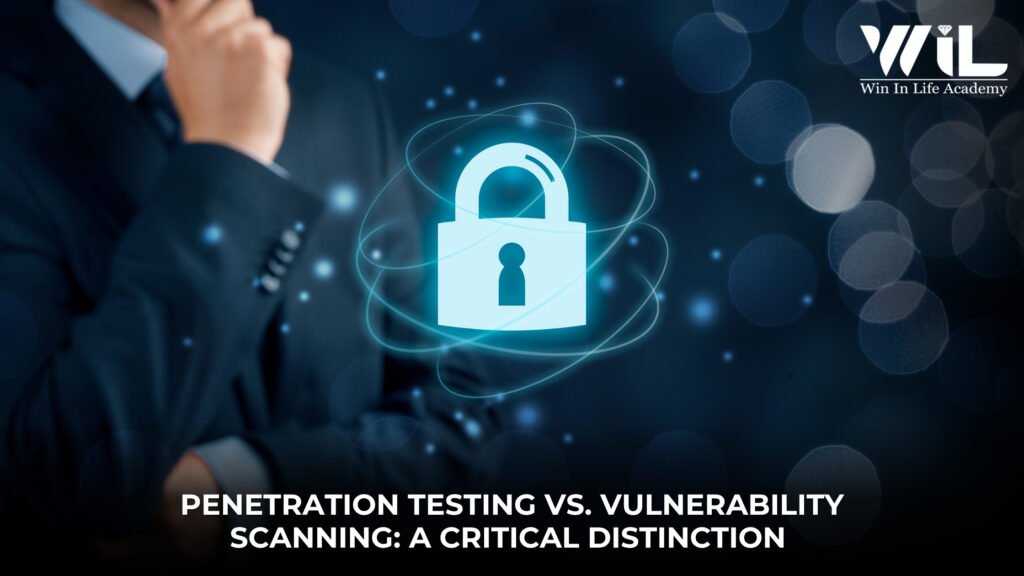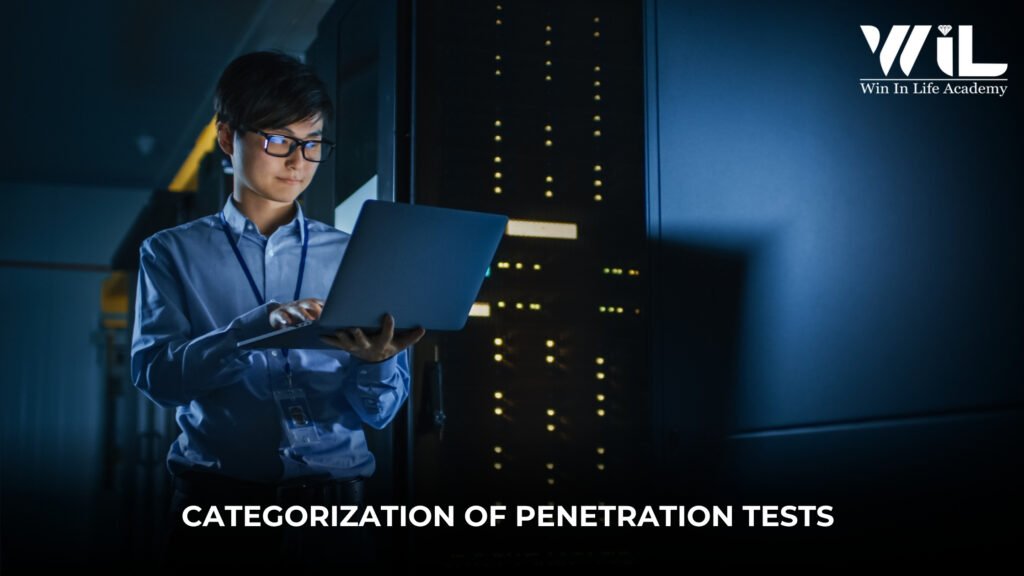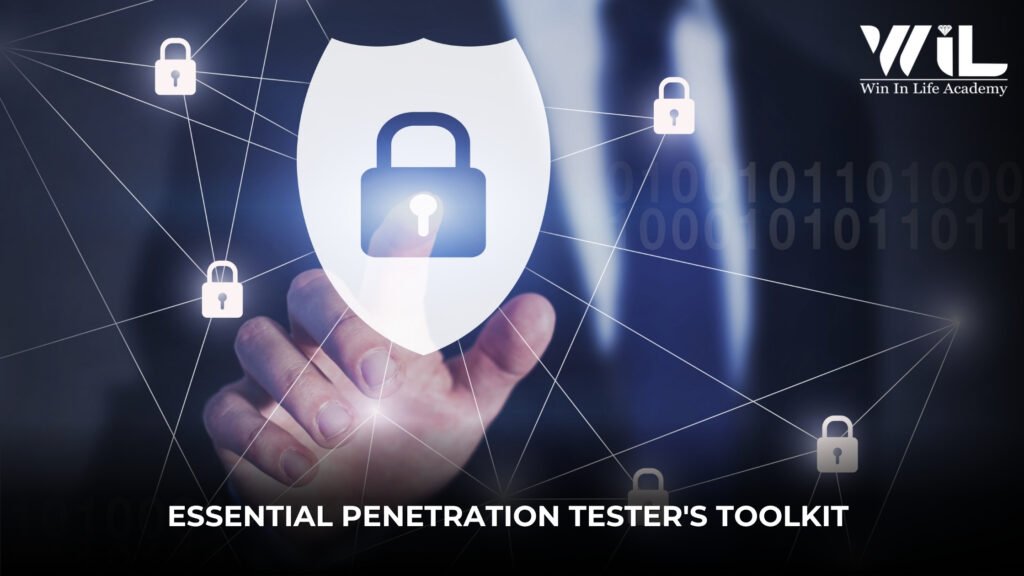Cyber threats are constantly evolving, and relying solely on reactive security measures is a losing strategy. Organizations face a relentless barrage of attacks, from sophisticated ransomware to insidious data breaches. This escalating threat landscape demands a proactive, offensive approach to cybersecurity. This is where penetration testing, often known as pen testing or pentest, becomes indispensable.
More than just a technical assessment, it is a vital part of a comprehensive cybersecurity strategy. It’s a simulated cyberattack on your own systems, networks, or applications, performed by ethical hackers to find vulnerabilities before malicious actors can exploit them. Unlike automated vulnerability scans, which offer a broad overview, a penetration test is a deep dive, mimicking real-world attack methods.
It aims to answer a crucial question: “How well can our defenses withstand a determined adversary?” By adopting the mindset of a malicious hacker, a skilled pen tester uncovers critical weaknesses that automated tools might miss, providing invaluable insights into an organization’s true security posture. This proactive stance is paramount, as the cost of a data breach far outweighs the investment in preventative measures like a thorough penetration test. We’ll also explore powerful tools like Metasploit, which are key to a professional pentester’s toolkit.
Enroll Now: Cybersecurity Course
Deconstructing Penetration Testing: A Basic Understanding
To truly understand its value, it’s essential to understand what penetration testing involves and how it differs from other security assessments.
What Exactly is Penetration Testing?
At its core, it is a controlled, authorized simulation of a cyberattack. Ethical hackers, or “pentesters,” use the same tools, techniques, and processes as real attackers to find and exploit vulnerabilities in an organization’s IT infrastructure. The objective is not to cause harm, but to identify weaknesses—whether in applications, network configurations, human processes, or even physical security—that could be exploited.
The scope of a pen test can range from a single web application to an entire corporate network, including cloud environments and mobile devices. The outcome is a detailed report outlining discovered vulnerabilities, their potential impact, and recommended remediation steps, empowering organizations to proactively strengthen their defenses.
Penetration Testing vs. Vulnerability Scanning: A Critical Distinction

While often confused, penetration testing and vulnerability scanning are distinct yet complementary.
- Vulnerability Scanning: This is an automated process that quickly scans systems and networks for known vulnerabilities, much like an X-ray identifying potential issues from a database of known flaws. It’s efficient for regular, broad checks but typically doesn’t exploit vulnerabilities or assess the combined impact of multiple low-risk findings.
- Penetration Testing: This is a significant step further. After identifying potential vulnerabilities, a pen tester actively attempts to exploit them, just as a real attacker would. This involves manual techniques, creative thinking, and the ability to chain seemingly minor flaws into a major flaw.
A penetration test assesses the actual risk and impact, validates the effectiveness of security controls, and tests the organization’s ability to detect and respond to an intrusion. It’s a real-world stress test, demonstrating actual exploitability, often utilizing tools like Metasploit for this purpose.
The ethical hacker mindset—combining curiosity, persistence, deep technical knowledge, and strict adherence to ethical boundaries—is what makes uniquely valuable.
The Lifecycle of a Penetration Test: Methodological Rigor
A structured approach is vital for an effective penetration test, mirroring a typical attack chain.
Phase 1: Planning and Reconnaissance
This initial phase defines the scope, rules of engagement, and objectives. It involves clearly outlining target systems (IP ranges, URLs), establishing legal agreements, and gathering extensive information about the target. This information can be passive (e.g., public data, social media) or active (e.g., basic network scans). The more details gathered, the better the chances of finding an attack vector.
Phase 2: Scanning
With initial information, the pen tester moves to active reconnaissance to identify potential vulnerabilities. This includes port scanning (using tools like Nmap), automated vulnerability scanning to find known flaws, and network mapping to understand the infrastructure. For web applications, this involves analyzing authentication, session management, and common web flaws. This phase aims to inventory potential entry points before exploitation attempts.
Phase 3: Gaining Access (Exploitation)
This is the core of the penetration test, where ethical hackers attempt to exploit identified vulnerabilities. This could involve software bugs, misconfigurations, weak credentials, or logical flaws. Password attacks, web application exploits (like SQL injection or XSS), and network exploits are common.
Crucially, this is where exploitation frameworks like Metasploit are indispensable. Metasploit provides a vast database of exploits, payloads, and auxiliary modules, enabling pentesters to quickly and effectively test known vulnerabilities across diverse platforms. Its modularity and automation capabilities streamline complex attack sequences, allowing testers to demonstrate the real-world impact of vulnerabilities. The goal is to prove exploitability and potential impact.
Phase 4: Maintaining Access and Pivoting
Once initial access is gained, the pen tester may attempt to maintain that access and explore further within the network, mimicking an attacker’s desire for persistence and lateral movement. This involves installing backdoors, creating new accounts, or modifying configurations for continued access. Pivoting uses a compromised system as a launchpad to attack other internal systems, uncovering further vulnerabilities. Simulating data exfiltration may also occur to demonstrate potential data loss.
Phase 5: Covering Tracks and Reporting
The final phase ensures actionable insights and system integrity. The ethical hacker carefully removes any backdoors, tools, or changes made during the pen test, restoring the system to its original state. The most vital output is the comprehensive report, which includes an executive summary for management and a detailed technical report for IT staff. This report outlines each vulnerability, its severity, proof of concept, affected systems, and concrete remediation steps, serving as a roadmap for improving security.
Categorization of Penetration Tests

Penetration testing is not a one-size-fits-all solution; different types focus on specific areas.
- Network Testing: Assesses the network infrastructure (routers, firewalls, servers) for vulnerabilities in configurations, protocols, and services, both external and internal.
- Web Application Testing: Targets web applications, their APIs, and databases for flaws like SQL injection, XSS, and broken authentication (as per OWASP guidelines).
- Mobile Application Testing: Examines mobile app security, including client-side vulnerabilities, insecure data storage, and weak communication with APIs.
- Wireless Testing: Assesses Wi-Fi and Bluetooth security for weaknesses in encryption and access point configurations.
- Cloud Testing: Focuses on vulnerabilities in cloud environments (e.g., AWS, Azure), including misconfigured services, insecure APIs, and IAM issues.
- Physical Testing: Involves attempting to gain physical access to facilities to test controls like alarms, cameras, and access badges, highlighting how physical breaches can lead to cyber breaches.
- Social Engineering Testing: Tests the human element by using psychological manipulation (phishing, vishing) to trick employees into revealing sensitive information or granting unauthorized access, emphasizing the need for security awareness training.
A comprehensive security strategy often combines these specialized pen test approaches.
Strategic Advantages: Why Penetration Testing is Indispensable
The benefits of penetration testing extend far beyond merely finding bugs, offering strategic advantages that fortify overall cybersecurity.
- Unearthing Hidden Vulnerabilities: A skilled pen tester uncovers logic flaws, chained vulnerabilities, and potentially zero-day flaws that automated scanners miss, revealing critical weaknesses an attacker would target.
- Validating Security Controls: A penetration test stress-tests existing security investments like firewalls and IDS/IPS, providing empirical evidence of their effectiveness and allowing for optimization.
- Ensuring Regulatory Compliance: Many regulations (GDPR, HIPAA, PCI DSS) mandate regular testing. These tests demonstrate due diligence and compliance, helping avoid costly fines and legal repercussions.
- Minimizing Financial and Reputational Damages: Proactive pen testing prevents costly data breaches—which involve legal fees, fines, and reputational damage—by fixing vulnerabilities before exploitation, saving millions.
- Strengthening Incident Response: A pen test tests an organization’s incident response plan, evaluating detection, response, containment, and eradication capabilities. This refines procedures and shortens recovery time.
- Building a Culture of Security Awareness: When human-related vulnerabilities are found (e.g., successful phishing), the pen test serves as a powerful training tool, fostering a more security-conscious organizational culture.
- Optimizing Security Investments: The detailed report from a penetration test provides clear, prioritized recommendations, enabling organizations to allocate security budgets and resources effectively to address the highest risks.
- Protecting Sensitive Data and Intellectual Property: By identifying pathways attackers might take to access valuable assets like customer information or trade secrets directly contributes to their protection.
- Maintaining Customer Trust and Business Continuity: Demonstrating a proactive commitment to security through regular pen testing reassures customers and partners, preserving trust and business continuity.
- Gaining a Competitive Edge: A demonstrably strong security posture, validated by professionals which can be a differentiator in the market, attracting and retaining customers and enhancing brand reputation.
Essential Penetration Tester’s Toolkit

Ethical hackers use a diverse array of tools for effective penetration tests.
- Metasploit: The Exploit Development Framework: One of the most powerful tools, Metasploit is an open-source framework with a vast collection of exploits, payloads, and auxiliary modules. It simplifies the exploitation of known vulnerabilities, allowing pentesters to focus on understanding the target and chaining attacks. Its capabilities make it invaluable for demonstrating real-world impact.
- Nmap (Network Mapper): A versatile utility for network discovery and security auditing, used for port scanning, OS detection, and identifying active hosts—often the first tool in reconnaissance.
- Wireshark: A widely used network protocol analyzer that allows pentesters to capture and analyze network traffic, invaluable for identifying clear-text credentials or insecure transmissions.
- Burp Suite: An integrated platform for web application security testing, including tools for intercepting HTTP/S traffic, proxy, vulnerability scanner, and intruder. It’s essential for web application pen testing.
- Kali Linux: A Debian-based Linux distribution specifically designed for ethical hacking and pre-loaded with hundreds of open-source security tools, including Nmap, Wireshark, Burp Suite (community edition), and Metasploit.
The toolkit of a pen tester constantly evolves to keep pace with emerging threats.
Overcoming Challenges in Penetration Testing
Penetration testing presents challenges that need to be addressed for effective engagement.
- Scope Definition and Legal Considerations: A clear, legally binding scope is vital to avoid unauthorized access and ensure a complete test.
- Resource Allocation and Expertise: Comprehensive pen tests require highly skilled ethical hackers; organizations must either invest in in-house talent or engage reputable external firms.
- Maintaining Business Operations: While designed to be non-disruptive, clear communication, scheduled testing windows, and rollback plans are essential to minimize risk of unintended outages.
- Effective Remediation and Follow-up: Finding vulnerabilities is only half the battle. Organizations must have a clear process for prioritizing and fixing discovered flaws, often followed by a re-test to confirm remediation.
Choosing the Right Penetration Testing Provider
Selecting a qualified and trustworthy penetration testing provider is critical.
- Experience and Certifications: Look for providers with a proven track record and ethical hackers holding recognized certifications (e.g., OSCP, CEH).
- Methodology and Reporting Quality: A good provider will have a transparent methodology and deliver clear, comprehensive, and actionable reports with detailed remediation steps.
- References and Case Studies: Request references and review case studies to assess their experience with similar industries or technologies.
- Communication and Trust: Open and honest communication throughout the process is paramount.
The Future of Penetration Testing: Evolving with the Threat Landscape
Penetration testing is dynamic, adapting to new technologies and emerging threats.
- AI and Machine Learning: AI and ML are increasingly automating parts of reconnaissance and vulnerability identification, making pen tests more efficient.
- Cloud Security and IoT Testing: Specialized for cloud environments and IoT devices is becoming crucial due to their unique vulnerabilities.
- Continuous Testing: Moving beyond annual tests, continuous security validation involves more frequent, sometimes automated, micro-tests providing real-time security posture feedback and immediate remediation.
The future is lies in its ability to adapt and leverage advanced techniques to stay ahead of the ever-changing threat landscape.
Final Thoughts
In an era of relentless digital threats, penetration testing is your most potent proactive defense. It’s a rigorous, realistic exercise that goes beyond mere vulnerability scanning, providing an unparalleled understanding of your true security posture by identifying and remediating weaknesses before malicious actors exploit them. It’s an indispensable part of any resilient cybersecurity strategy, shifting organizations from a reactive stance to a proactive defense.
The benefits of regular testing are undeniable: from uncovering hidden vulnerabilities to validating security controls, ensuring regulatory compliance, and bolstering incident response. It’s an investment that protects your digital assets, reputation, customer trust, and business continuity. Tools like Metasploit empower ethical hackers to mimic adversary tactics, making the pentest an invaluable reality check for your security infrastructure. Every organization should integrate regular and comprehensive into its security roadmap.
Embrace the proactive mindset. Don’t wait for a breach to expose your vulnerabilities. Take control of your cybersecurity destiny by integrating robust penetration testing into your security lifecycle. The knowledge gained from a thorough penetration test empowers you to build stronger defenses, protect your valuable assets, and maintain stakeholder trust.
Ready to elevate your understanding of ethical hacking and secure your future in cybersecurity?
Visit Win in Life Academy today and explore our comprehensive courses designed to equip you with the knowledge and skills to thrive in ethical hacking, including in-depth training on methodologies and tools like Metasploit. Your journey towards unassailable digital defense and a successful career in cybersecurity starts here! Learn to conduct effective test and become a vital asset in the fight against cybercrime. Secure your life, secure your future with Win in Life Academy!
References
What is penetration testing?
https://www.ibm.com/think/topics/penetration-testing
What is penetration testing? | What is pen testing?
https://www.cloudflare.com/en-in/learning/security/glossary/what-is-penetration-testing
What is penetration testing?
https://www.techtarget.com/searchsecurity/definition/penetration-testing





